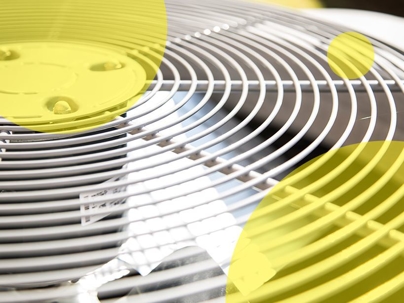BE IN THE KNOW: LIST OF COMMON HVAC TERMS
Below is a glossary of HVAC terminology to provide understanding of these common terms in the industry.
Absolute Pressure: In the larger context of pressure measurement, absolute pressure is part of the “zero reference” trinity. This includes Absolute Pressure (AP), Gauge Pressure and Differential Pressure. AP is zero referenced against a perfect vacuum.
Absolute Temperature: Absolute temperature is the temperature of an object on a scale where 0 is defined as absolute zero. Absolute temperature scales are Kelvin and Rankine. Absolute zero is the lowest temperature at which the system is in a state of lowest possible (minimum) energy. No electronic device can function at this temperature.
Absolute Zero Pressure: Absolute zero, temperature at which a thermodynamic system has the lowest energy. It corresponds to −273.15 °C on the Celsius temperature scale and to −459.67 °F on the Fahrenheit temperature scale.
Absorbent: Ability to pull in and hold liquid: able to absorb liquid.
Absorption Refrigerator: An absorption refrigerator is a refrigerator that includes a heat source (e.g., solar energy, a fossil-fueled flame, waste heat from factories or district heating systems) that provides the energy required to power the cooling process. The principle can even air condition buildings using the waste heat from a gas turbine or water heater. This use is very efficient, since the gas turbine then creates electricity, hot water and air-conditioning (called cogeneration/trigeneration).
ACCA: The ACCA (The Indoor Environment & Energy Efficiency Association) is a nonprofit association whose membership boasts more than 60,000 professionals and 4,000 businesses in the indoor environment and energy services trade. ACCA cooperates with members to increase professional contracting, energy efficiency, and healthy, comfortable indoor environments.
Accumulator: An accumulator is a storage tank that receives liquid refrigerant from the evaporator and prevents it from reaching suction lines before vaporizing
AFUE: Annual Fuel Utilization Efficiency (AFUE) is the amount of fuel converted to space heat in proportion to the amount of fuel sent to the boiler or furnace. It won’t include the electricity consumed by the fan and controls.
AHRI: The Air-Conditioning, Heating, and Refrigeration Institute (AHRI) is a trade association representing manufacturers of HVACR and water heating equipment all over the globe.
BBB: The Better Business Bureau (BBB) helps people discover and advocate for businesses, brands and charities they can trust.
BTU: British Thermal Unit (BTU) is a standard measure of thermal (heat) energy. One BTU is the amount of energy necessary to heat one pound of water one degree Fahrenheit, measured at its heaviest point.
CEE: Consortium for Energy Efficiency (CEE) is a U.S. and Canadian consortium of gas and electric efficiency program administrators. CEE works together to accelerate the design and availability of energy-efficient equipment and services for lasting public benefit.
COP: Coefficient of Performance (COP) is a system of measurement for the efficiency for heat pumps in the heating mode that represents the ratio of total heating capacity to electrical energy input. For example, if a heat pump has a COP of 3, it will offer three units of energy for every one unit of electricity consumed.
EER: Energy Efficiency Ratio (EER) of a given cooling device is the ratio of output cooling energy (in BTU) to input electrical energy (in Wh) at a defined operating point. EER is generally calculated using a 95 °F outside temp and an inside (actually return air) temp of 80 °F and 50% relative humidity.
HSPF: Heating Seasonal Performance Factor (HSPF) is a measure of a heat pump’s energy efficiency over one heating “season.” It represents the total heating output of a heat pump (including supplementary electric heat) throughout the normal heating season (in BTUs) as compared to the total electricity used (in watt hours) during the same length of time.
HVAC: HVAC is a common acronym that stands for Heating Ventilation and Air Conditioning. This is the most frequently used term when referring to complex systems that do both heating and cooling.
Mini-Split: Mini-split systems are ductless room air conditioners or heaters. When only a few rooms need heating and cooling, mini-split heat pumps and air conditioners provide a smart, all-around solution. Extreme efficiency in a small package.
NATE: NATE, North American Technician Excellence Inc., is an independent, third-party, nonprofit certification body for HVACR technicians. NATE certification tests demand real-world working knowledge of HVACR systems and applicants can acquire installation and/or service certification in one or more specific areas. NATE certification tests are created by the NATE technical committee. The NATE technical committee is comprised of industry experts who developed and administer NATE’s Knowledge Areas of Technician Expertise (KATEs). Each exam is designed based on these knowledge areas of expertise. The technical committee offers a wide range of perspectives including contractors, educators, manufacturers and utilities. Members also are diversely spread everywhere in the country.
SEER: Seasonal Energy Efficiency Ratio (SEER) is the cooling output within an average cooling season divided by the total electric energy input during the same period. The higher the unit’s SEER rating the more energy efficient it is.
SHGC: Solar Heat Gain Coefficient (SHGC) is a measure of how effectively a window reflects heat caused by sunlight.
U-Factor: U-factor is a measure of how well a window performs at stopping heat flow. Look for windows with a lower U-factor (the lower the U-factor, the better).

